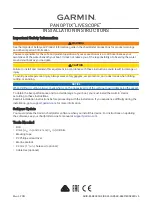
12
Open qPCR’s fast ramp rate of up to 5
°
C/s allows for rapid thermal cycling, resulting in quick
turnaround times from start to finish. The instrument’s firmware controls the thermal cycling
temperature by using a control loop to ensure rapid heating and to control temperature
overshoot around the desired point. A heated lid minimizes tube condensation throughout the
cycling process.
1.5 Optics
The optical system of the Open qPCR detects one spectral band for the single channel model
and two spectral bands for the dual channel model. Each of the 16 wells has its own LED and
photodiode detector(s). Figure 1.4 depicts all components involved in the optical detection.
Figure 1.4
During a run, the LED emits light through an excitation filter embedded within the heating block
on the instrument lid. The incident light strikes the top of each reaction tube and excites the
fluorophores in the sample. The emerging light then passes through the emission filters before
being detected by the photodiode board.
Detection wavelengths for the dual channel and single channel models are illustrated in Table
1.5 below:
Table 1.5
Model
Channel
Fluorophores/Dyes
Detection
Wavelength
Single Channel
1
FAM, Chai Green, SYBR Green
513 - 555 nm
Dual Channel
1
FAM, Chai Green, SYBR Green
508 - 532 nm
2
HEX, VIC, JOE
573 - 597 nm
Photodiode board
Excitation filter
LED
Lid Heater
Emission filter
Photodiode board
Emission filter













































